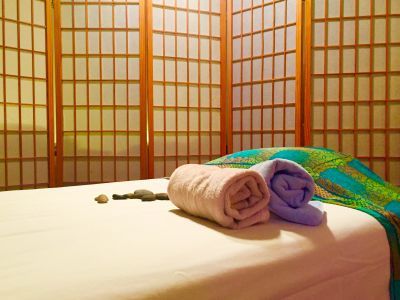Services & Rates
Trager© Approach
Developed by Dr. Milton Trager to relieve his patients of physical pain and mental and emotional stress, the Trager Approach is designed to free up the body, release muscle tension, and improve your state of mind and physical well-being. Because Trager is a very gentle and individualized type of bodywork, it is suitable for a wide range of clients, including athletes, dancers, children, seniors, patients recovering from joint replacements and other surgeries. Even long-held tension can be released and pain relieved by Trager sessions, allowing you then to move more naturally and effortlessly, improving your overall quality of life. Since this deeply relaxing work is done without oil, you can wear loose-fitting, comfortable clothing during a Trager session.
Lisa Bregman is one of the only CTP (Certified Trager© Practitioners) in Washington, DC. She has been certified for 14 years. To achieve the degree of Certified Trager© Practitioner, a professional must first undergo Trager© therapy sessions themselves, and then complete more than 500 hours of training. To maintain certification, a practitioner must participate in continuing education.
At the first visit, Lisa will typically take your health history and explore any physical problems you are currently experiencing. She may then discuss how you're feeling emotionally, since part of the treatment will involve helping you make connections between your state of mind and your physical problems.
There are two components to the Trager© approach. In the first, known as tablework (because the work is done on a special table), Lisa gently and rhythmically rocks, shakes, and stretches various parts of your body, loosening tight muscles and painful joints. This rhythmic movement gradually induces a state of deep relaxation. Once relaxed, the person experiences just how pleasurable it is to move freely--a key step in learning to break free of the restrictive muscle patterns associated with physical tightness and pain.

For the tablework portion of the session, you will lie on a padded table, dressed in loose-fitting clothing that allows you to move freely. No oils or lotions are used. Lisa moves your muscles rhythmically and lightly, lengthening and shortening, sliding, rolling, and flexing them. The movements are never forced and you should feel no pain. You should also begin to experience an invigorating sense of deep relaxation.
During the second part of a session, Lisa will teach you simple sequences of movements, which you can later do at home. Called Mentastics (short for mental gymnastics), these movements are designed to reduce tension and increase physical mobility. Unlike most exercises, which are done to improve strength or endurance, the goal of Mentastics is to achieve a relaxed, meditative state.
A typical Trager© session lasts from 60 or 90 minutes. The number of sessions required will depend on your ailment. Some people feel better after just one session, but most people benefit from the cumulative effects of five or six once-a-week sessions. You will also be encouraged to do the Mentastics movements on your own. Two or three 10 to 15 minute sessions of Mentastics a day are recommended to start.
The Trager© approach is particularly useful for relieving the everyday stress that can build up in muscles and joints. With its emphasis on self-awareness skills, this method is especially good for situations in which the physical patterns of stress recur due to ongoing emotional causes. In addition, the particular hands-on technique used by Trager© therapists can be especially beneficial for difficult nerve and muscle problems that have not responded to other body-centered approaches, such as chiropractic, massage, or traditional physical therapy.
Those who have benefited from Trager© therapy report those sessions can ease tight muscles and joints, while simultaneously producing feelings of relaxation and vitality. Athletes credit the Trager© approach with helping them focus, improving their stamina, boosting their speed, and making their movements more graceful. Because the therapy can also improve flexibility and concentration, it can help prevent injuries.
Swedish Massage
I mix and match modalities according to clients' needs and requests. For a very relaxing massage, I might do Swedish only. Usually, I mix it with some deep tissue and Trager. Swedish Massage is a very relaxing and therapeutic style of bodywork. It combines oils or lotion with an array of strokes such as rolling, kneading, and percussion to help the body improve its circulation. The benefits of this type of bodywork are wide-ranging and include relief from aches and pains, decreased stress levels in the body, enhanced mental clarity, improved appearance, and greater flexibility.
Call to ask your specific questions or to schedule an appointment: (202) 686.7202
Movement Education
Movement education uses a custom-tailored approach to improving your body awareness and movement skills. Combining problem-solving, guided-discovery, and exploratory methods, this practice inevitably leads to a stronger connection between the mind and body, creating a more natural and graceful experience of movement and interaction with other people. This is integrated into the bodywork session at no extra cost according to your needs and interest.
Myofascial Release
Myofascial release is a form of soft tissue therapy intended to eliminate pain, increase range of motion, and rebalance the entire body. It does this by using massage techniques to stretch the fascia and release the bonds that exist between the fascia, muscles and bones. Fascia is the connective tissue that connects and covers all muscles, organs, and skeletal structures of the body. Direct myofascial release is sometimes known as deep tissue work. Indirect release applies light pressure and gently stretches the fascia; this allows for increased blood circulation and relief from pain.